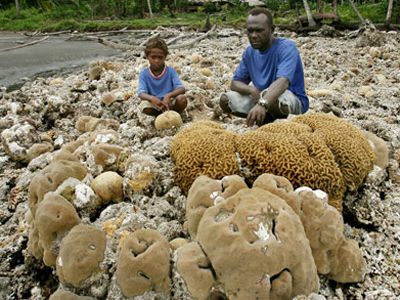The underwater caves of the ancient Maya civilization, known as cenotes, have become time capsules that preserve the remains of ancient civilization and the fossils of extinct megafauna.

The Yucatan Peninsula in Mexico is dotted with submerged sinkholes called 'cenotes,' some of which form huge caves. Photographer Marketin Brohn, who has been diving in such cenotes for many years, explains the remains and fossils that lie in the cenotes.
Divers in Mexico's Underwater Caves Get a Glimpse of Rarely Seen Artifacts, Fossils and Human Remains | Smithsonian
The Yucatan Peninsula is a peninsula that separates the Gulf of Mexico from the Caribbean Sea, and is known for its many Mayan ruins.
The submerged sinkholes scattered across the Yucatan Peninsula are called 'cenotes.' Cenotes are filled with fresh groundwater, and it is believed that the ancient Mayan civilization used the water from cenotes in their daily lives and rituals.

Many of the cenotes are connected to huge horizontal holes, and Mr. Brohn has been diving into cenotes and exploring underwater caves for the past 10 years.

The water level in the cenotes during the Mayan civilization was about 90 cm lower than it is today, and people had to go deep into the caves to get fresh water. For this reason, human bones thought to be the remains of Mayan civilization people are sometimes found in the underwater caves.

Below is a photo of the discovered human skull. It seems that high-ranking Mayan civilization people cut their teeth for decoration, and there are traces of cutting on the teeth of the skull discovered in the underwater cave.

In addition to human bones, the researchers also found fossilized shells of sea turtles and fossils of land-dwelling mammals. As for why mammal fossils are found deep in underwater caves, Brohn explained, 'During the Ice Age, the water level in the cenotes was much lower than it is today, and mammals went deeper into the caves in search of fresh water. Then, as the water level rose, the remains became fossils.'

In addition, a large number of photos of the underwater caves taken by Mr. Brohn are available at the following link.
Martin Broen Photography
https://www.martinbroen.com/#/cave-exploration/

Related Posts:
in Science, Posted by log1o_hf







